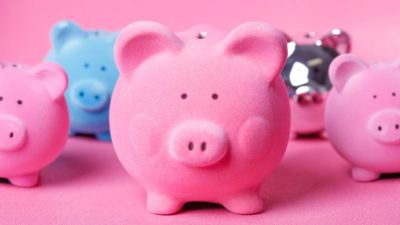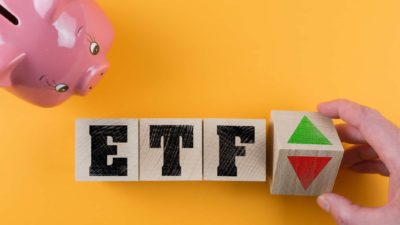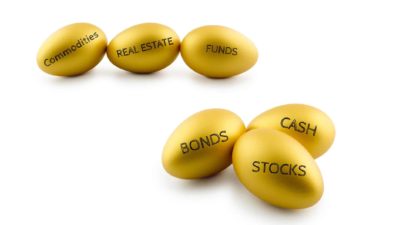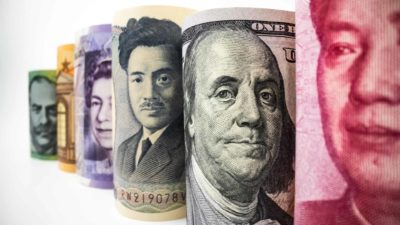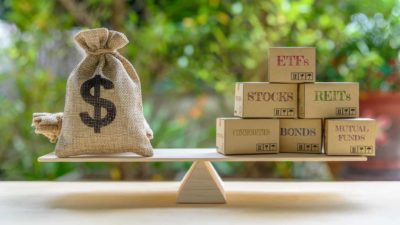Walking hand in hand with almost every country with a stock exchange is an accompanying index. An index is how investors can rank companies on stock exchanges according to their size. Indices are very useful for gauging the overall performance of the share market, as opposed to the individual shares that they consist of. In recent years, this has gained a new level of importance given the rise of index exchange-traded funds (ETFs) that have become one of the most popular avenues for investing in shares.
So in Australia, our stock exchange is typically represented by the S&P/ASX 200 Index (ASX: XJO), which holds 200 of the largest companies listed on the ASX. The ASX 200 ranks these 200 shares by market capitalisation, so the largest companies have the most weight in the index. That's why an ASX 200 index fund like the iShares Core S&P/ASX 200 ETF (ASX: IOZ) will (at the time of writing) have 7.82% of its funds in CSL Limited (ASX: CSL), but only 0.06% of the fund in Bega Cheese Ltd (ASX: BGA) shares.
So how does the ASX 200 compare to other countries' indices? The ASX is often criticised for being 'heavy' in bank and mining shares, so let's see how it stacks up.
ASX 200 in the spotlight
The top 10 shares in the ASX 200 are as follows:
- CSL Limited (ASX: CSL) with a 7.82% weighting
- Commonwealth Bank of Australia (ASX: CBA) with a 7.22% weighting
- BHP Group Ltd (ASX: BHP) with a 5.99% weighting
- National Australia Bank Ltd (ASX: NAB) with a 3.91% weighting
- Westpac Banking Corp (ASX: WBC) with a 3.7% weighting
- Australia and New Zealand Banking Group Ltd (ASX: ANZ) with a 3.26% weighting
- Wesfarmers Ltd (ASX: WES) with a 3.09% weighting
- Woolworths Group Ltd (ASX: WOW) with a 2.7% weighting
- Macquarie Group Ltd (ASX: MQG) with a 2.67% weighting
- Transurban Group (ASX: TCL) with a 2.35% weighting
So straight off the bat, we can see that ASX bank shares make up a huge proportion of the ASX 200, with 5 out of the top 10 being banks. Mining companies, not so much. BHP is there at number 3, but it's the only ASX resources share in this list. It's worth noting though, that there are 4 ASX resources shares in the following 10 stocks in the ASX 200.
So how does this list compare with other exchanges around the world?
Over to the USA
Well, here's a list of the top 10 companies in the United States S&P 500 Index (SP: .INX), the most popular index covering American shares.
- Apple Inc (NASDAQ: AAPL)
- Microsoft Corporation (NASDAQ: MSFT)
- Amazon.com Inc (NASDAQ: AMZN)
- Facebook Inc (NASDAQ: FB)
- Alphabet Inc (NASDAQ: GOOG)(NASDAQ: GOOGL)
- Berkshire Hathaway Inc (NYSE: BRK.A)(NYSE: BRK.B)
- Johnson & Johnson (NYSE: JNJ)
- Procter & Gamble Co (NYSE: PG)
- Visa Inc (NYSE: V)
- JPMorgan Chase & Co (NYSE: JPM)
Only one bank, and no miners! Very different, as you can see. In the US, it's big tech that dominates, rather than banks or miners (although Berkshire owns a large number of banking stocks). The first 5 stocks on this list are all massive tech companies.
Oh, Canada!
Let's now have a look at Canada and the top 10 stocks on the S&P/TSX 60 Index (TSI: TX60), the index covering the top 60 companies on Canada's TSX (Toronto Stock Exchange):
- Royal Bank of Canada (TSE: RY)
- Shopify Inc (TSE: SHOP)
- Toronto-Dominion Bank (TSE: TD)
- Canadian National Railway (TSE: CNR)
- Bank of Nova Scotia (TSE: BNS)
- Enbridge Inc (TSE: ENB)
- Brookfield Asset Management Inc (TSE: BAM.A)(TSE: BAM.B)
- Barrick Gold Corp (TSE: ABX)
- Canadian Pacific Railway Ltd (TSE: CP)
- Bank of Montreal (TSE: BMO)
Now that looks more like the ASX. Four banks and one miner! Interestingly, e-commerce wunderkind, Shopify, is also present, as well as two railway companies, which don't have nearly the same presence on our own ASX.
London calling
Finally, let's have a look at the top 10 stocks in the FTSE 100 Index (FTSE: UKX), the index that tracks the largest 100 companies on the United Kingdom's London Stock Exchange:
- AstraZeneca plc (LON: AZN)
- HSBC Holdings plc (LON: HSBA)
- GlaxoSmithKline plc (LON: GSK)
- Diageo plc (LON: DGE)
- British American Tobacco plc (LON: BATS)
- Unilever plc (LON: ULVR)
- Rio Tinto plc (LON: RIO)
- Royal Dutch Shell plc (LON: RDSA)(LON: RDSB)
- BP plc (LON: BP)
- Reckitt Benckiser Group plc (LON: RB)
Another interesting grab bag. AstraZeneca and GlaxoSmithKline are pharma giants, with the former now famous for its coronavirus vaccine candidate, incidentally. HSBC is a bank, whereas Diageo and British American Tobacco are 'sin stocks' (something we don't really see on the ASX). Unilever and Reckitt Benckiser are consumer staples giants, whereas Rio Tinto (yes, the very same), BP and Royal Dutch Shell are all mining/oil companies.
Foolish takeaway
From this analysis, we can see that the ASX 200 has far more in common with both the TSX 60 and the FTSE 100 that the American S&P 500 today. However, saying that, all four exchanges are unique in their own way, and compliment and contrast to the ASX 200 as such.

